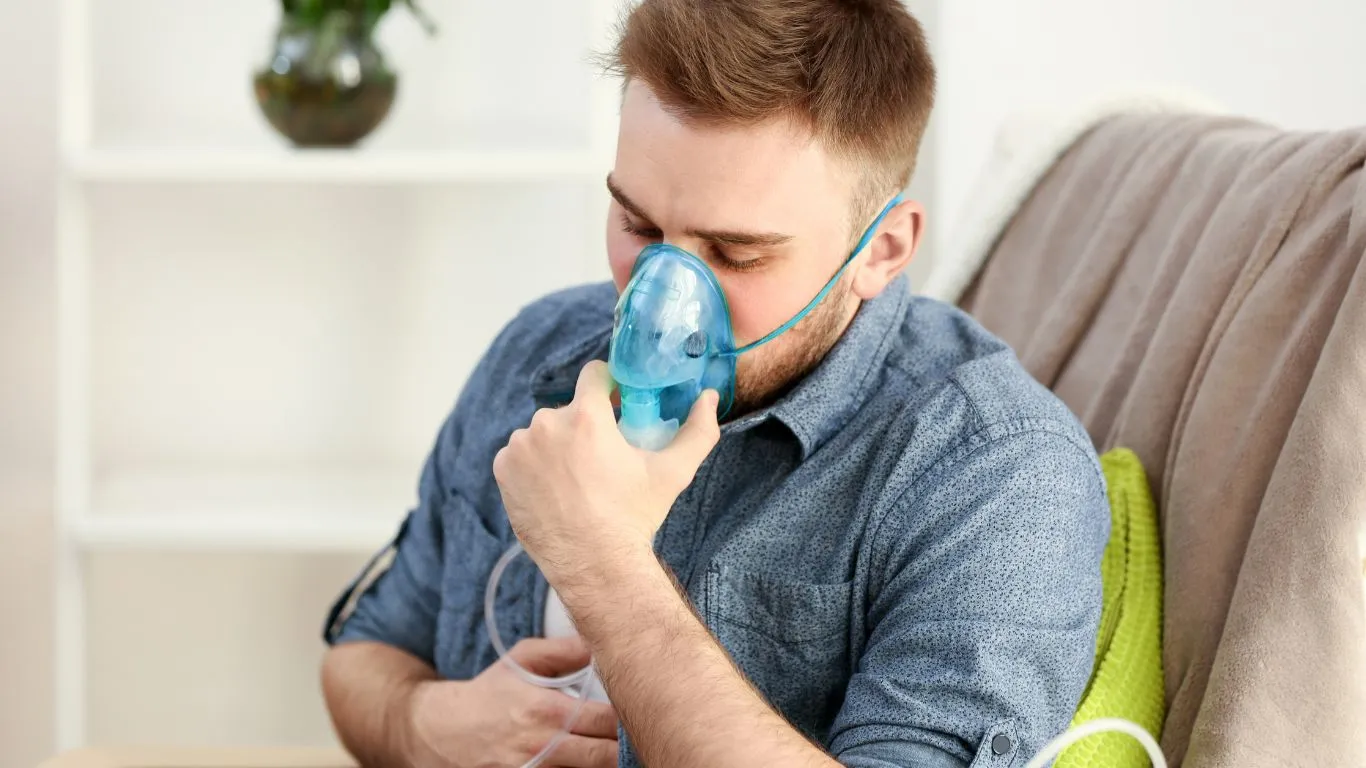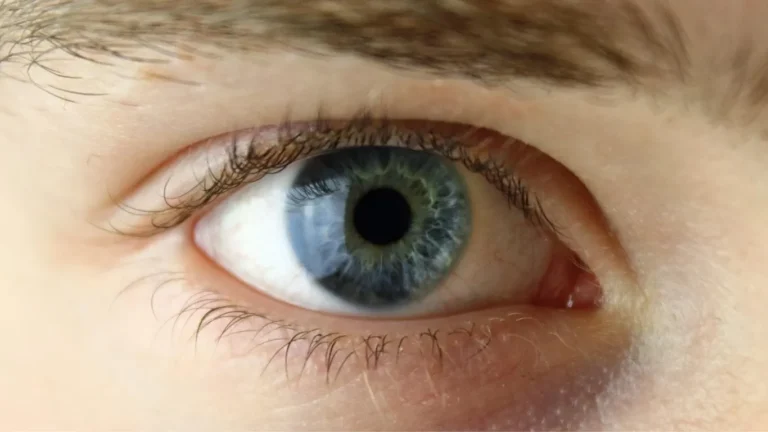Can Asthma Cause Low Oxygen During Naps? Shocking Truth Inside
Can asthma cause low oxygen during naps? As a pulmonary nurse practitioner, I get asked this more often than you might think. You’d assume that sleep is when your body finally gets to relax—but for folks with asthma, that’s not always the case. I’ve seen patients wake up from what was supposed to be a peaceful nap gasping, confused, or just overwhelmingly fatigued. It’s scary. And yes, low oxygen levels during naps can absolutely be related to asthma. Let’s unpack how that happens, why it matters, and what you can do about it—without getting lost in too much jargon.
How Asthma Affects Breathing While You’re Awake vs. Asleep

Breathing Changes at Rest
During the day, your body’s in motion, your lungs are more active, and adrenaline keeps your airways a bit more open. But when you’re asleep—or even just taking a nap—your whole respiratory system slows down. If you already have inflamed, hypersensitive airways from asthma, that slowdown can make a big difference. Think of it like a narrow hallway getting even narrower when the lights are off—you just don’t notice it until you bump into something.
The Hidden Risk of Napping with Asthma
What many folks don’t realize is that short naps can still trigger nighttime asthma patterns. This is especially true for people who have nocturnal asthma, where symptoms get worse in the evening or during sleep. Even a quick snooze on the couch can lead to shallow breathing, less oxygen exchange, and that awful groggy feeling when you wake up. I once had a patient—let’s call him James—who kept waking from naps feeling like he’d been underwater. We tracked it back to his poorly controlled asthma and dust mites in his living room recliner. Yikes, right?
Can Asthma Cause Low Oxygen During Naps? Let’s Get Into the Science

What Happens in the Lungs?
When you’re napping and your breathing slows down, those narrow, inflamed airways don’t get enough airflow. That means oxygen isn’t moving efficiently into your bloodstream. It’s not that you’re holding your breath—your lungs just can’t do their job as well. Over time, this can lower your oxygen saturation levels, especially in people with moderate to severe asthma.
Some common reasons why this happens during naps:
- Airway inflammation: Even without an active asthma attack, ongoing inflammation narrows airways.
- Post-nasal drip: Lying down causes mucus to pool, further blocking air passages.
- Relaxation of airway muscles: Your muscles relax more when you sleep, which can worsen airway collapse in asthma.
- Reduced respiratory drive: The body’s natural alertness is lower, so it doesn’t respond as quickly to breathing changes.
Warning Signs Your Oxygen May Be Dipping
If you’ve ever woken up from a nap feeling disoriented, short of breath, or with a headache, your oxygen might’ve dropped. Other signs can include:
- Unusual fatigue after a nap
- Waking up gasping or coughing
- Blue-tinged lips or fingernails (in more severe cases)
- Heart palpitations or a racing pulse
As a nurse practitioner, I often recommend using a pulse oximeter at home for patients who suspect low oxygen levels during sleep. It’s a small, easy-to-use tool that clips on your finger and reads your O2 levels. If it dips below 92% consistently during naps, it’s definitely time to talk to your doctor.
Not All Asthma is Created Equal

Types of Asthma That Might Be More Problematic During Sleep
Asthma comes in many flavors, and some types are more likely to cause low oxygen during naps than others. Here’s what to watch for:
- Nocturnal asthma: Like we mentioned earlier, this type gets worse at night and can sneak into nap time too.
- Allergic asthma: Especially if your bedding or nap area has dust mites, pet dander, or mold.
- Exercise-induced asthma: If you nap after a workout, residual airway tightness could still be lingering.
- Severe persistent asthma: These patients are at a much higher risk for oxygen desaturation even with mild exertion or rest.
I’ve had patients who only experienced symptoms while sleeping and thought they didn’t “really” have asthma. It’s easy to overlook when it only pops up at rest, but those oxygen drops can affect your heart, brain, and overall energy levels throughout the day.
Personal Observation From the Clinic
Honestly, I can’t tell you how many times I’ve seen people brush this off as “just feeling tired” after a nap. But when we dig into their case, we find their oxygen levels are dipping to 89%, 88%—well below the healthy range. After optimizing their asthma meds, working on sleep hygiene, and sometimes even prescribing nighttime inhalers, they feel like a whole new person. It’s like peeling off a foggy film they didn’t even know was there.
So yes—asthma absolutely can cause low oxygen during naps. And if you’ve been feeling off after your daytime dozes, it’s time to stop shrugging it off and start getting answers.
Why Asthma Symptoms Often Go Unnoticed During Naps

“Silent” Symptoms Are Still Symptoms
Here’s the tricky part—when you’re napping, your body isn’t always great at letting you know something’s wrong. You’re not fully conscious to recognize the tightness, the wheeze, or the shallow breathing. I’ve had patients describe it as waking up “foggy,” like they didn’t really rest. That subtle fatigue? Sometimes that’s your brain not getting enough oxygen. It doesn’t always show up as dramatic gasping or full-on wheezing. That’s why people often don’t connect the dots between asthma and low oxygen during naps.
One of my long-term patients—Maria—had been napping daily because she felt exhausted all the time. We eventually figured out her oxygen saturation dropped to 87% during rest. No big daytime attacks, no obvious symptoms, but her naps were basically silent oxygen dips. Once we adjusted her asthma management plan and added a HEPA filter in her room, the improvement was night and day.
Oxygen Dips Aren’t Just a Sleep Issue
Low oxygen, even for short periods, can affect your brain function, cardiovascular system, and immune health. Think of it as a slow leak in your energy tank. You’re not running on empty, but you’re definitely not topped off. Over time, that matters. It affects your ability to focus, recover, and just feel good in your body. And it’s something I always look for when a patient tells me they feel “off” but can’t explain why.
Tracking Oxygen Levels at Home (Yes, You Can Do This!)

The Pulse Oximeter: Your Pocket-Sized Health Ally
If you’ve never used one, a pulse oximeter is a small clip-like device you place on your finger. It measures your heart rate and your oxygen saturation (SpO2). I recommend them all the time—especially for patients who think their asthma’s “under control” but feel run-down for no reason. Pop it on before a nap and check it right after. Anything below 92% is worth a conversation with your provider. Anything in the 80s? That’s a red flag.
- Ideal O2 range: 95-100%
- Borderline: 92-94%
- Low: Below 92%—get it evaluated
Pro tip: track your results in a notebook or notes app. That way, you’ll have a record if your provider needs to dig deeper. It’s a simple habit that’s helped many of my patients discover patterns we wouldn’t catch in a single appointment.
Smart Devices Can Help Too
Nowadays, a lot of smartwatches can track your oxygen levels during sleep or naps automatically. They’re not always as accurate as a medical-grade pulse ox, but they can still give you a heads-up if something’s consistently off. I’ve seen tech-savvy patients bring in logs from their Apple Watch or Fitbit showing dips that led us to uncover poorly controlled asthma—or even sleep apnea they didn’t know they had.
What You Can Do to Prevent Oxygen Drops While Napping

Make Your Nap Zone Asthma-Friendly
If you’re planning to nap during the day, setting up a clean and clear environment can make a real difference. It doesn’t have to be fancy—just intentional. Here’s what I often suggest:
- Use an air purifier with a HEPA filter, especially if you live in a city or have pets.
- Keep pillows and blankets dust-free—wash bedding weekly in hot water.
- Avoid scented candles or diffusers if you’re sensitive to airborne irritants.
- Prop yourself up slightly if post-nasal drip or GERD is an issue.
I nap myself sometimes after long shifts, and I’ve noticed I breathe a lot easier when I prep my space the same way I’d advise my patients to. It’s easy to overlook, but it matters. Clean air is oxygen-friendly air.
Use Your Medication Strategically
This one’s a biggie: if your doctor has prescribed a rescue inhaler or a maintenance inhaler, make sure you’re using it appropriately. I’ve had patients assume they only need their inhaler during exercise or full-on attacks, but if your symptoms creep up during naps, pre-nap inhaler use might help. This is something to discuss with your provider, but here’s a general framework I talk about with my patients:
- If you nap regularly and often feel short of breath afterward, track it.
- Talk to your provider about timing your inhaler 15–30 minutes before your nap.
- Consider whether your long-term control plan needs updating (especially if symptoms sneak in during rest).
Asthma management isn’t one-size-fits-all. It’s okay to tweak your routine to fit your lifestyle—even your napping lifestyle!
Let’s Talk About When to Worry

Knowing the Red Flags
I always tell my patients: if something feels off, it probably is. Don’t wait until it becomes an emergency. Here are signs your asthma (and oxygen levels) need a closer look:
- Waking up frequently gasping, coughing, or with chest tightness
- Feeling dizzy or disoriented after naps
- Daytime fatigue that doesn’t improve with rest
- SpO2 readings consistently in the low 90s or high 80s
If any of this sounds familiar, it’s time for a full asthma checkup. You might need a tweak in your medication, or there could be an underlying issue like sleep-disordered breathing. Don’t try to tough it out—there’s no trophy for struggling in silence.
What I’ve Learned Over the Years
In my experience, patients who advocate for themselves and listen to their bodies are the ones who end up with the best outcomes. Asthma isn’t always loud. Sometimes, it whispers during the quietest part of your day—your nap. That’s why it’s so important to pay attention and treat even the subtle signs seriously. I’ve seen patients turn things around completely once they acknowledged that something was off and took action. It’s empowering, honestly.
Building a Long-Term Asthma Nap Strategy

Routines That Actually Work
Let’s be real—managing asthma isn’t just about taking meds. It’s a whole lifestyle. And when it comes to preventing low oxygen during naps, having a routine can make all the difference. I always encourage my patients to create a “nap plan,” especially if they notice symptoms creeping in when they rest.
Here’s what I typically recommend, based on years of clinic experience:
- Pick a consistent nap time: Midday naps (before 3 PM) tend to interfere less with circadian rhythm and allow better monitoring of symptoms.
- Do a quick breathing check-in: If your chest feels tight or you’ve been coughing, don’t skip your controller inhaler or prescribed pre-nap rescue dose (if approved by your provider).
- Hydrate, but don’t overdo it: Dehydration thickens mucus. A glass of water before a nap can help thin secretions and ease breathing.
- Elevate your head slightly: This reduces pressure on the diaphragm and helps prevent post-nasal drip—both of which can contribute to oxygen dips.
Personally, I’ve found that using a wedge pillow or even just doubling up a firm pillow can make a world of difference in my own breathing comfort during rest. I recommend it often, and my patients usually report better naps and less grogginess after trying it.
How to Talk to Your Doctor About Nap-Time Asthma Symptoms

Advocating for Your Breathing Needs
I totally get it—talking to your provider about something as vague as “feeling off after naps” can feel awkward. But it’s important. Don’t downplay your symptoms. I’ve had patients show up with notes or logs they kept on their phones—it makes the appointment so much more productive.
If you’re preparing for a visit, consider jotting down:
- How often you nap and how long
- Any symptoms you notice after napping (headache, breathlessness, etc.)
- Pulse oximeter readings before and after naps
- Medication timing in relation to nap symptoms
And remember: not all providers immediately connect asthma to low oxygen during naps, especially if you’re not having full-blown attacks. So bring it up confidently. You deserve to breathe well, even when you’re just resting.
When It’s Time for a Specialist
If you’re already on medication and still noticing oxygen dips, it might be time to consult a pulmonologist. They can perform sleep studies, advanced lung function tests, and check for other issues like sleep apnea or reactive airway disease. I’ve referred several patients over the years for sleep studies after hearing about nap-related breathing issues—and most came back with results that changed their care plans for the better.
Other Conditions That Can Mimic Nap-Time Asthma

It’s Not Always Just Asthma
It’s worth noting that other health issues can look a lot like asthma during naps. I’ve had patients swear it had to be asthma, but further testing revealed otherwise. Here’s a quick breakdown of conditions that might overlap with asthma symptoms:
- Sleep apnea: Obstructed breathing during sleep causing low oxygen levels and fatigue afterward.
- GERD (acid reflux): Can trigger airway irritation and mimic asthma, especially when lying down.
- Heart failure: In more advanced cases, fluid buildup in the lungs can cause shortness of breath when reclining.
- Chronic bronchitis or COPD: Often overlaps in older adults misdiagnosed as asthmatics.
All this to say—if your oxygen keeps dropping during naps, it’s definitely something to investigate, even if asthma isn’t the only suspect. The earlier we pinpoint it, the better the treatment plan can be.
Empowering Yourself With Knowledge and Tools
Education is Asthma’s Best Enemy
Something I’ve learned in practice is this: patients who understand what’s happening inside their lungs make better choices. If you know why asthma can cause low oxygen during naps, you’re way more likely to take the right steps to prevent it.
Here are a few of my go-to educational resources that I share with patients:
- https://www.nhlbi.nih.gov/ – National Heart, Lung, and Blood Institute
- https://www.health.com/ – Easy-to-read health tips and asthma articles
- https://www.cdc.gov/ – Up-to-date info on asthma triggers and prevention
I’m a firm believer that knowledge is power. Whether you’ve been managing asthma for years or are just starting to suspect a connection between your symptoms and naps, digging into the right info helps you feel more in control—and less overwhelmed.
Let’s Wrap This Up (But No Nap Just Yet!)
If you’ve made it this far, you’re clearly invested in your lung health—and that’s awesome. The biggest takeaway? Asthma can absolutely cause low oxygen during naps, and even subtle dips matter. You don’t have to wait for a major episode to start taking this seriously. With the right tools, a supportive healthcare team, and some small changes to your routine, you can nap peacefully and wake up feeling recharged—not foggy and fatigued.
Disclaimer
This article is for informational purposes only and not intended as a substitute for professional medical advice, diagnosis, or treatment. Always consult your physician or a qualified healthcare provider with any questions you may have regarding a medical condition.

Bianca Nala is a compassionate Nurse Practitioner with a strong background in primary and respiratory care. As a health writer for Healthusias.com, she combines her clinical expertise with a talent for clear, relatable storytelling to help readers better understand their health. Bianca focuses on topics like asthma, COPD, chronic cough, and overall lung health, aiming to simplify complex medical topics without losing accuracy. Whether she’s treating patients or writing articles, Bianca is driven by a single goal: making quality healthcare knowledge accessible to everyone.






